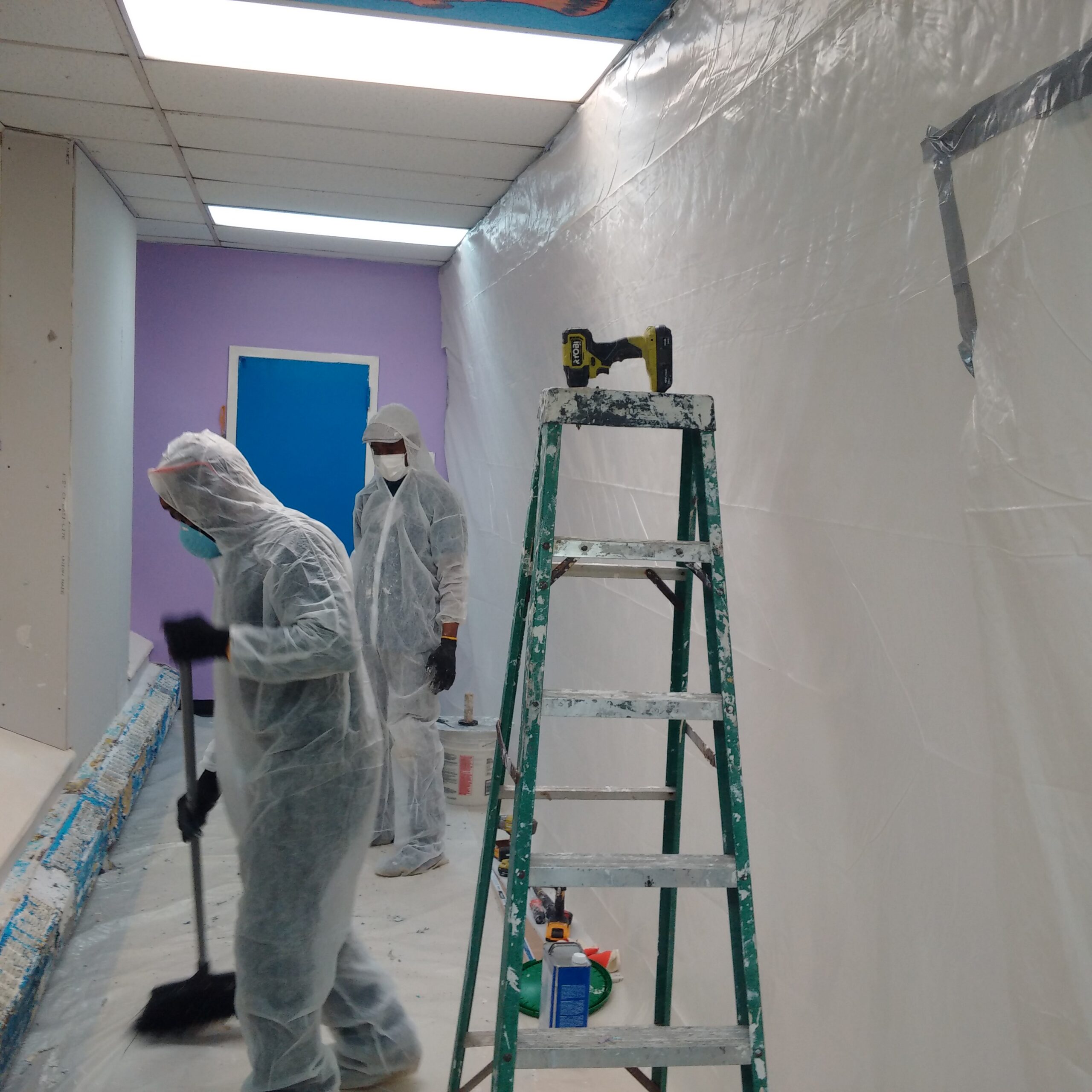Lead Paint Removal Service-- NYC's Trusted Solutions for Lead Safety And Security
Lead Paint Removal Service-- NYC's Trusted Solutions for Lead Safety And Security
Blog Article
Comprehensive Overview on Effective Lead Infraction Elimination Techniques
In the realm of environmental security, dealing with lead violations demands a precise and structured approach. This comprehensive guide starts by highlighting the important first actions of recognizing lead hazards through advanced evaluation and testing techniques. Techniques such as XRF analysis and dust wipe sampling are essential in pinpointing contamination sources. Additionally, the guide elaborates on the importance of adhering to stringent safety and security methods throughout the elimination process, including the use of proper PPE and separating influenced locations (Lead Paint Removal Company). The subsequent sections assure to review post-removal confirmation and precautionary techniques, ensuring lasting safety and security and compliance. Discover the intricate information that make these methods not just reliable however vital.
Determining Lead Hazards
Determining lead hazards is a crucial very first step in alleviating the risks connected with lead direct exposure. Lead, a harmful steel, can be existing in various ecological tools, including paint, soil, water, and dirt. It postures severe health and wellness threats, particularly to kids and expectant females, resulting in neurological damages and developing hold-ups. For that reason, exact recognition of potential lead sources is vital for reliable removal.
The preliminary phase in determining lead dangers includes comprehending typical lead resources within the developed atmosphere. Structures developed before 1978 are particularly susceptible due to the prevalent use of lead-based paint throughout that duration. In addition, dirt contamination can happen from weakening exterior paint, industrial emissions, or historic use leaded gas.
One more significant source is lead piping and pipes components, which can leach introduce alcohol consumption water. Customer goods such as toys, porcelains, and imported products might likewise include damaging lead levels. Notably, occupational settings and pastimes including lead can track contaminants right into homes.
Analysis and Testing
When dealing with lead hazards, reliable evaluation and testing are extremely important. This critical step ensures the recognition and quantification of lead presence, therefore assisting subsequent removal efforts. First evaluation generally entails a visual inspection to recognize prospective lead sources, such as degrading paint or contaminated dirt. This is complemented by even more rigorous screening approaches to identify the degree of contamination.

Dust wipe tasting is an additional critical method, specifically in household settings. By gathering samples website here from floorings, windowsills, and various other surface areas, this approach provides insights into prospective direct exposure dangers. Soil testing around building perimeters is important to discover lead contamination that might present dangers, particularly to kids.
Safe Elimination Procedures
Upon completing extensive assessment and testing, implementing safe elimination treatments is the following important phase in dealing with lead risks. This process ensures that lead-contaminated products are successfully and securely removed, lessening risk to both employees and residents. The initial step involves separating the damaged area utilizing plastic sheeting and appropriate securing methods to prevent the spread of lead dust.
Employees must wear proper personal safety devices (PPE), including respirators, handwear covers, and non reusable coveralls, to reduce direct exposure. Utilizing specialized tools and damp techniques, such as damp fining sand or using HEPA-filtered vacuum cleaners, decreases the diffusion of lead bits. It is essential to stay clear of completely dry sanding or rough blasting, as these approaches can generate unsafe lead dirt.
Waste disposal is one more vital part; all contaminated products must be firmly bagged and classified according to EPA and local laws. Additionally, detailed cleaning of the workplace with HEPA vacuums and wet cleaning guarantees the elimination of residual lead bits.
Post-Removal Confirmation

Confirmation of successful lead elimination, known as post-removal verification, is imperative to make sure the safety and security and habitability of the remediated area. This process includes a collection of meticulous assessments and examinations made to spot any type of recurring lead fragments that may position health and wellness threats. The first step usually consists of an aesthetic examination to assess the completion and high quality of the remediation work. This assessment makes certain that all known sources of lead have been dealt with and that no visible indications of contamination stay.
Adhering to his response the aesthetic assessment, environmental sampling is conducted. This involves accumulating dirt, dirt, and often water samples from the remediated area. Accredited laboratories assess these examples to determine lead levels, ensuring they drop listed below the security thresholds developed by governing bodies such as the Environmental Security Company (EPA)
In addition, air top quality screening may be performed to spot airborne lead particles, specifically in cases where comprehensive lead-based paint elimination or renovation has happened. The outcomes of these examinations give measurable data validating that the lead degrees are within acceptable restrictions.
Eventually, post-removal verification works as an important checkpoint, verifying the effectiveness of the lead reduction efforts and guarding the health and wellness of occupants and site site here visitors.
Safety Nets and Upkeep

A key safety net includes using lead-safe licensed specialists for any kind of restoration, repair, or painting tasks. These professionals are trained in techniques that reduce lead dirt and particles. Additionally, preserving coloured surfaces to prevent damaging or peeling is necessary, as deteriorating paint can release lead bits right into the environment.
Educational efforts targeting property owners and occupants pertaining to the dangers of lead and the significance of reporting any type of possible hazards can even more improve preventative initiatives. Regular cleansing using HEPA vacuums and wet mopping methods can substantially lower lead dirt buildup.
Conclusion
In summary, effective lead violation elimination demands a careful approach including complete assessment, accurate screening, and stringent removal procedures. Recurring examinations and upkeep are vital to mitigate future lead dangers, thus guarding public health and wellness and making certain sustained conformity with regulatory needs.
Report this page